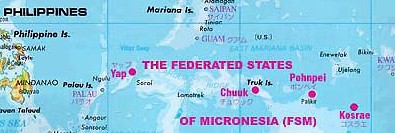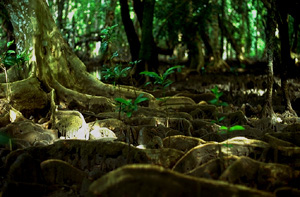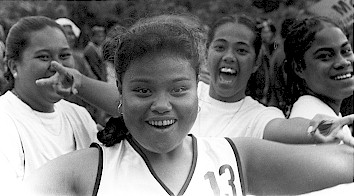Working at the English Department at the College of Micronesia - FSM
The opinions expressed are those of author's, not of COM-FSM. Last updated 11/07. Please report any inaccuracy to jgourlay@comfsm.fm
A
Short History of COM-FSM
Pohnpei
Weather
Practicing
Patience for Mental Survival
Where is your
college/department?
How are the beaches?
What do you do for fun?
How many students do you have?
What language do you speak on Pohnpei?
What's the teaching load / class
sizes?
What are the salaries and benefits?
What's the cost of living?
How much can I ship?
Is Pohnpei a safe place to live?
What about the health situation?
Can I send my children to school/church?
Municipalities of Pohnpei: Madolenihmw, Kitti, Nett, Sokehs, U
Population: 34,000
Time Zone: GMT -11
Size: 130 square miles
Lat: 6' 54'' North Long: 158' 14' East
Languages: Pohnpeian, Kapingamarangi, Pingelapese, Mokilese, Mortlockese

The Federated States of Micronesia!
Where is your college / department?
This web-page pertains to the English Department on the National Campus of the College of Micronesia in Palikir, Pohnpei. Each of the four states in the Federated States of Micronesia also has one college site as part of the COM-FSM system. For more basic facts about the FSM, please refer to FSM Telecom's map page.
There are no beaches on the main island of Pohnpei. Pohnpei is surrounded by a fascinating fringe of mangrove swamp. The reef islands and the islands of Ahnd and Pakin both have beaches. These are accessible by boat.

Photo of Pohnpei Mangroves by Robert Roberts
Pohnpei has one town, Kolonia, which has a three-screen movie theater and a handful of hotels and restaurants. Bars are also plentiful and generally pleasant. There are many sakau markets on the island. Also, there is hiking, snorkeling, diving and other ocean-based activities.
There is one disco/nightclub, Club Flamingo, which is frequented by young people and can get rowdy past 2AM or so.
There are frequent parties and social gatherings, among foreigners or Pohnpeians, that you will be invited to.
And if all else fails, you can watch cable TV.
How Many Students Do You Have?
Attendance at the National campus is usually around 900 students in the fall, 650-700 in the spring, and 200 or so over the summer.
The students at the National campus are almost all from one of the four states of the FSM, with a few foreigners in attendance also. As of 2007, most (about 70%) of the students at National campus went to school on Pohnpei.
 \
\
Chuukese student Sinopia Sifferin at COM-FSM Founding
Day games.
Photo by Jonathan Gourlay
Some Pohnpeian Words:
Kaselehlie - Hello
Pwoahng Mwahu - Good night
Doadoak - Work
Namwharki - Chief / King
Baku - Shark
Pwoakapwoak - Love
The COM-FSM national campus is truly unique in that Micronesians from all four states are represented here. (Though, increasingly, this is less the case.) Each state (besides Kosrae) has many different outer islands with different languages spoken. Don't be surprised to find 10 different first languages in any given class.
In Kolonia, the only real "town" on Pohnpei, everyone speaks at least some English and it is quite possible to get around in Pohnpei without ever learning a word of Pohnpeian. The words you'll hear on the street, however, will almost always be Pohnpeian.
Pohnpeian language is helpful, of course, if you want to learn more about the island and its culture. We hope you do, because why else do you want to come here?
Basic Pohnpeian courses are regularly offered at Pohnpei State Campus.

